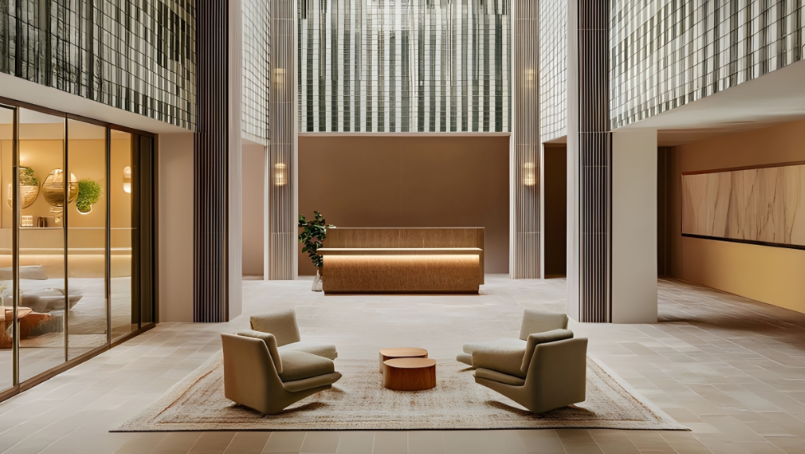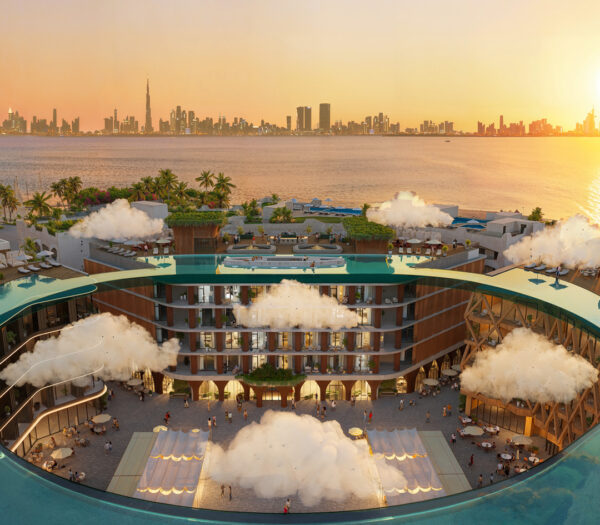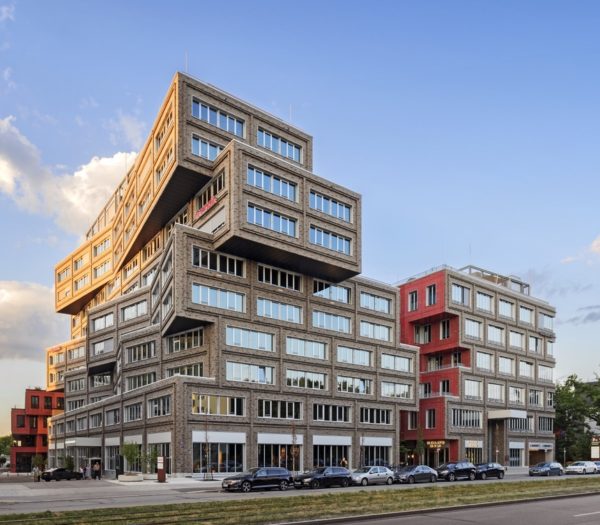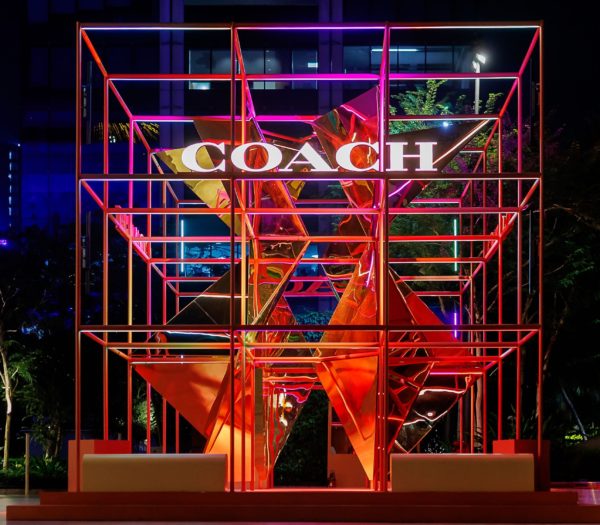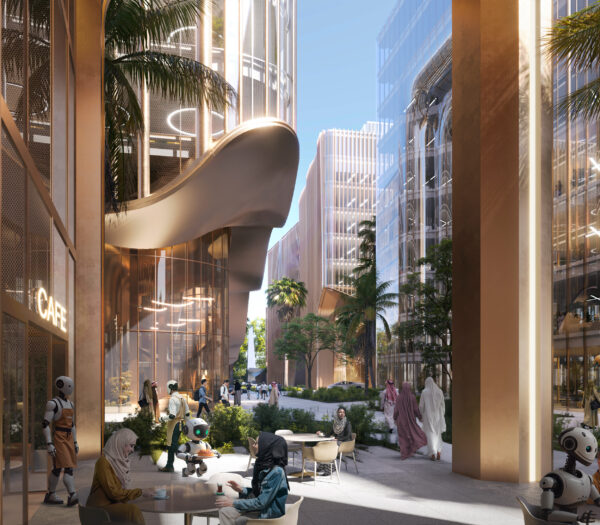In Dubai, there’s a place called The Heart of Europe, a development that recreates the atmosphere of iconic European destinations. The project sits on an artificial archipelago where another distinctly European vision is taking shape with the help of artificial intelligence.
The Hygge Hotel, scheduled for completion in early 2027, draws inspiration from Nordic principles of comfort and connection. New York City-based firm HWKN employed AI-powered research and prompt engineering to distill this philosophy into spatial form. Rather than following a standardized hospitality brand playbook, the design was shaped by cultural cues and experiential frameworks, producing spaces intended to feel personal, tactile, and emotionally resonant. According to HWKN, this approach allowed the team to move beyond conventional methods, using AI not only to guide material selection and aesthetics but also to explore how hygge could be translated architecturally.

Facade and Form
The exterior is defined by fluted, glazed terracotta columns that flare outward like tree trunks, forming a rhythmic allée at street level. Thin porcelain bands in muted tones frame generous outdoor terraces, while the warm red-brown palette reinforces the sense of comfort and tactility. A rooftop glass pool links the Hygge Hotel with its neighboring City Hotels, creating a continuous horizon of reflection and relaxation above the complex.
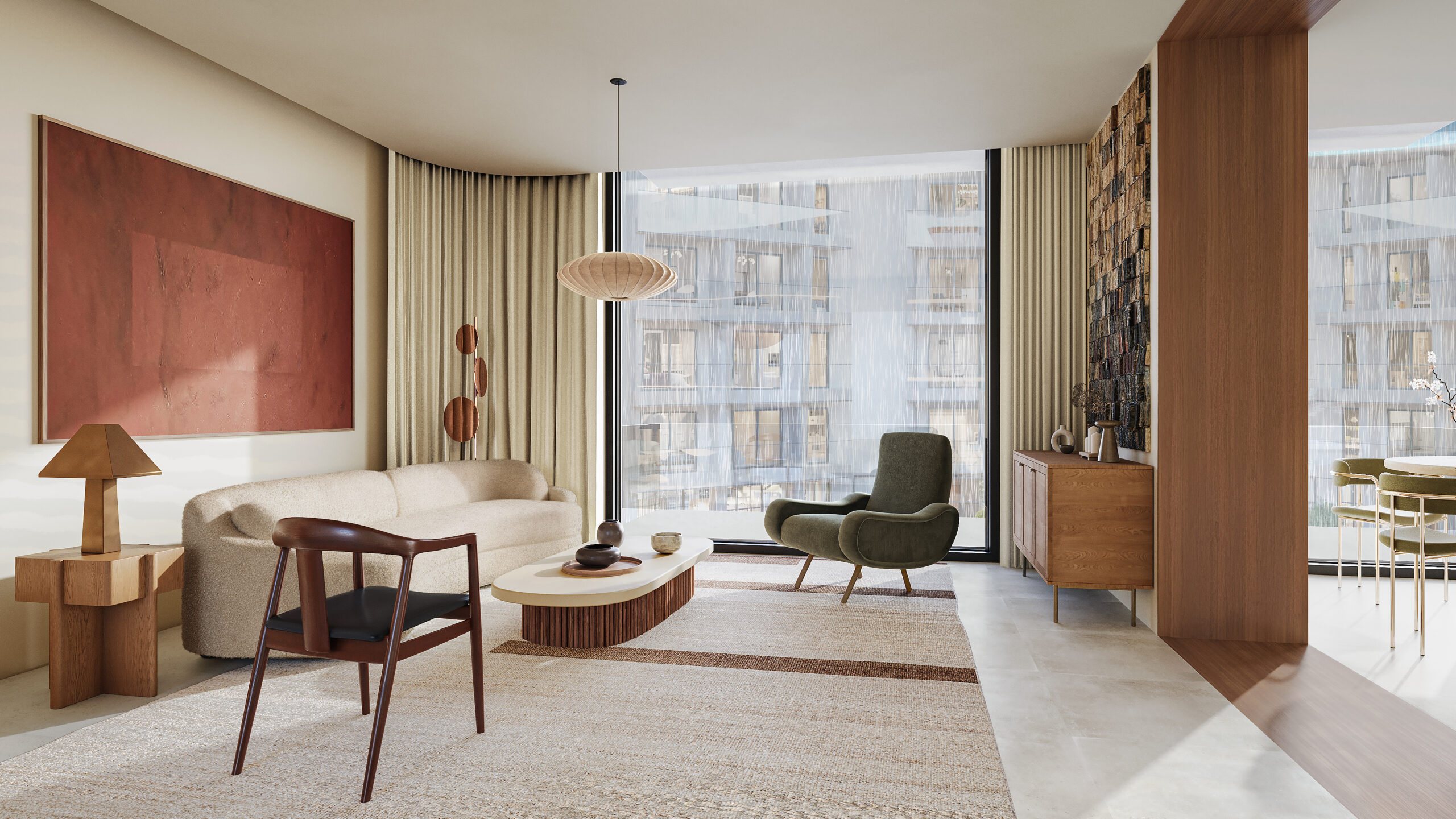
Interiors as Community Space
Inside, a three-dimensional lobby anchors the building, doubling as a spatial connector and gathering point. Shared lounges adjacent to guest rooms encourage social interaction—whether dinners, casual meetings, or simple moments of connection. In this sense, hygge is treated not as décor but as a lived experience, woven into circulation and communal design.
A Shift in Dubai Hospitality
In contrast to the spectacle-driven hospitality projects that often define Dubai, Hygge Hotel emphasizes intimacy over scale and cultural resonance over global uniformity. Its AI-driven design process points toward a new model of architectural practice—one that combines emerging technologies with human-centered values to create spaces that feel both futuristic and timeless.
